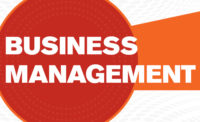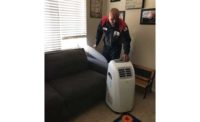Service World Expo was held virtually from Sept. 22-24, 2020, and featured a keynote speakers, breakout sessions, and a virtual exhibition hall. Four breakout sessions, featuring Tim Musch, Todd Liles, Brian Kraff, and Jason Johnson, are reviewed here.
HVAC and Key Performance Indicators
In “The Five ‘Gotta Have’ Numbers You Need to Know,” Tim Musch, director of business development at MarketSharp, outlined the critical key performance indicators that HVAC contractors should be aware of. He began by listing the five important metrics:
- Inquiry to set appointment conversion percentage
- Set appointment to demo/presentation percentage
- Salespeople’s closing rate
- Salespeople/lead source NSLI (net sales per lead issued)
- Marketing cost per sale
Musch then went through the five points, offering tips to improve each metric in a contracting company.
“Do you and your staff have all of the availability necessary to respond to the leads you get in an effective manner to convert as many as you possible can to set appointments?” he asked. He explained that the speed of follow-up and the skill of handling leads will determine the ability to convert leads to appointments. Then, contractors must examine how many of those appointments turn into sales presentations (this isn’t always the case — since some appointments are cancelled, and other times the homeowners aren’t there when technicians arrive).
Salespeople who are given the opportunity to close a sale should be tracked to see how often those sales are being closed. In addition to this, the NSLI examines how much is sold per leads given.
“Look at that number two ways — look at it by sales people and by lead source, because both of them will tell a story,” Musch said. “A big story.”
Lastly, contractors must examine how much of marketing ends in sales, and which strategies are the most effective.
“Find yourself an industry-specific solution, like a CRM, that’s designed to operate your business and give you the numbers you need,” Musch said.
Keeping HVAC Sales Low Pressure
Todd Liles, founder of Service Excellence Training, presented on “The Six Keys to Low Pressure Sales.” He began by explaining how high-pressure sales can both reduce the amount of sales and make sales presentations a negative experience for the customer.
“The relief valve of pressure is relationship,” Liles began, explaining how a first call with a client is a little like a first date, where a relationship must be built before a second date is asked for. “Value must be built before you ask the client for money.”
A relationship can be built as soon as the technician arrives by greeting customers warmly and ensuring the customer that they are in good hands. This is also formed by examining what the customer needs and wants out of the call that day.
“Find out what they’re looking for from the company they’re going to pay,” he said. “You must allow the client to get what they want, but show them what they need.”
Liles explained that a company must create a desire in the client to fix the problem by demonstrating real facts to customers, such as explaining how poor airflow can affect temperature, ventilation, and humidity. After this, the salesperson should create the solutions to the problems they brought up and show them to the customer.
“After you create solutions, only then do you ask the client to do business with you,” Liles said. “That’s how you get low-pressure sales.” He reminded listeners that most of the pressure on salespeople is self-imposed.
“The client made the choice to call you,” he said. “The client wants you there.” He added that the greatest lesson of low pressure sales is to be quiet after asking for a sale. After asking for the sale, contractors should wait until the customer says something and provides more information.
“It is one of the hardest lessons to learn, but it can be so critical,” Liles said.
HVAC Contractors and Conquering Google
Brian Kraff, cofounder of Market Hardware, spoke as the breakout speaker for “We Are a Top Service Contractor … but why doesn’t Google think so?”
“How do we take our contracting businesses and make the contracting business work with Google so that we can take advantage of the growth in Google, and the growth in the internet?” he began. He explained that the evolution of Google and the internet means that the techniques to succeed in the digital world are ever-changing.
Kraff said that the biggest mistake contractors make with online marketing is underbudgeting.
“The mistake is assuming that for whatever you can afford, that that budget will actually work,” he said. “Have your budget set with a professional marketer who can say what’s working with similar folks in your market area or a look-alike area.”
He spoke about ways contractors can succeed in the internet world, such as 1) having a mobile-responsive website design, 2) designing an easy-to-use website format, 3) valuing online reviews and responding to them, and 4) taking advantage of Google My Business.
“The best insurance you can have is display ads,” he said. “If someone goes to your website, it drops a cookie, and in the future, Google will know that they can serve ads about your website to the person who visited your site.” Even if somebody doesn’t purchase from an HVAC company on the first visit to the site, the display ads allow repeated exposure to that customer.
Mastering Connected Homes as a Contractor
Jason Johnson, connected home program manager for Service Nation, taught contractors about how they can “Own the Home with Connected Home Services.”
He began by saying that 79 percent of homeowners prefer a professional to implement a connected home strategy, examining the layout of the home and offering a professional system design and a quality installation.
“Most of the people [watching this session] are contractors who wield that skillset and have the resources to be that pro inside the house,” Johnson said. “The first thing: Start small, and complement your existing offerings.”
He explained that just because there’s a myriad of smart home products doesn’t mean contractors should try to implement all of them at once, because that can make the implementation unnecessarily challenging and complex.
Johnson also explained that local contractors have some distinctive advantages over large corporations selling smart products. Some of these advantages include a local office and support team, the ability to cross-sell products to a single customer base, and a free sales presentation when technicians are in homes for standard HVAC service.
Some of the challenges for contractors involve competing with zero-down smart product installation pricing, as well as larger corporation’s aggressive door-to-door sales.
Johnson finished by offering best practices for technicians doing connected home product installs.
“Make sure that technicians are applying your customer introduction correctly, your COVID best practices, they’re cleaning up after themselves, they’re giving a thorough training on the work that they did, they’re giving the customer training and helping them get logged into the app, and they’re showing them how everything works prior to taking off,” he said.








